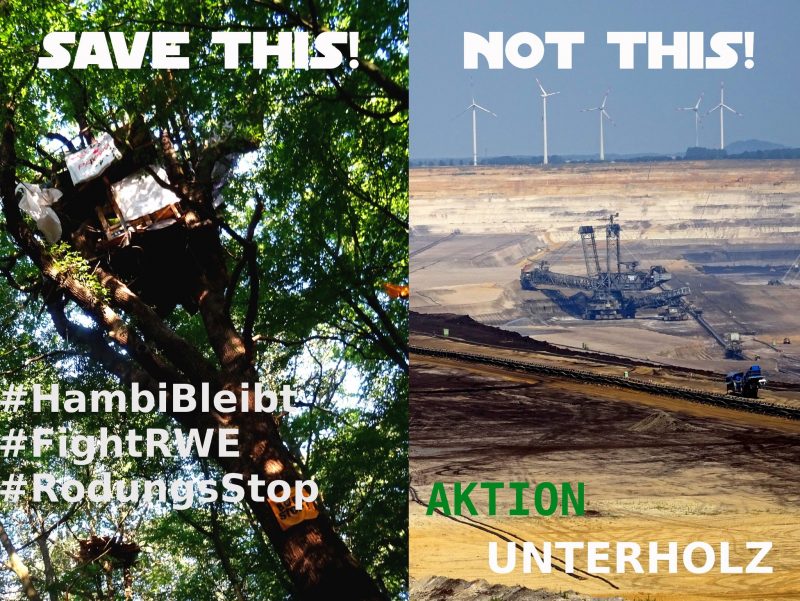
Aktion Unterholz calls for mass actions of civil disobedience
In 2017, the climate justice movement was able to stop the wood clearing of the Hambach forest for the mining pit for an entire clearing season 2017/2018 (October to March) by protests and legal complaints. It looks like RWE became afraid that the occupation of the forest by climate activists would prevent the wood clearing a second time. At the same time the coal commission started negotiations in Berlin to phase out coal mining and burning in Germany.
RWE together with the police started clearing works in the Hambach forest on 6 September. Police raids continued on 13 September and destroyed tree houses of the Hambach forest occupation. Aktion Unterholz (action underwood), supported by climate activists Ende Gelände, called for mass actions of civil disobedience on 15 September. Hundreds of people came for Aktion Underholz and rebuilt the destroyed structures and tree houses. On the same day, 20 activists of the action group „NiederAUSmachen“ started a blockade of the coal fired power plant Niederaussem operated by RWE. On Sunday, 16 September, 1300 people demonstrated with a forest walk for the preservation of the forest.
Only 10% of the Hambach forest remain. The remaining core of the forest still contains the diversity of the original Hambach forest that exists since the end of the ice age 12,000 years ago. The Hambach forest is an irreplaceable piece of nature, habitat of many endangered animals and trees. The preservation of the Hambach forest limits the open pit Hambach and the coal from this open pit plays a central role in the Rhenish lignite mining district. The rescue of the Hambach Wald is at the same time an important step towards phasing out coal and the closure of the entire area.
Every year new temperature records, more extreme weather events such as drought, heavy rain, flood and heat waves. The destruction hits people in the global south the hardest, but here in Europe, the consequences are becoming more and more noticeable. Everybody knows that the coal has to remain in the ground to avoid heating up the climate crisis. Its exploitation destroys the livelihood of nature and humans. The Rhenish lignite mining district is Europe’s largest carbon dioxide (CO2) source, with its three opencast mines and three coal fired power plants. Inhabitants of the region are resettled and agricultural areas are destroyed for the continued expansion of the mines.
